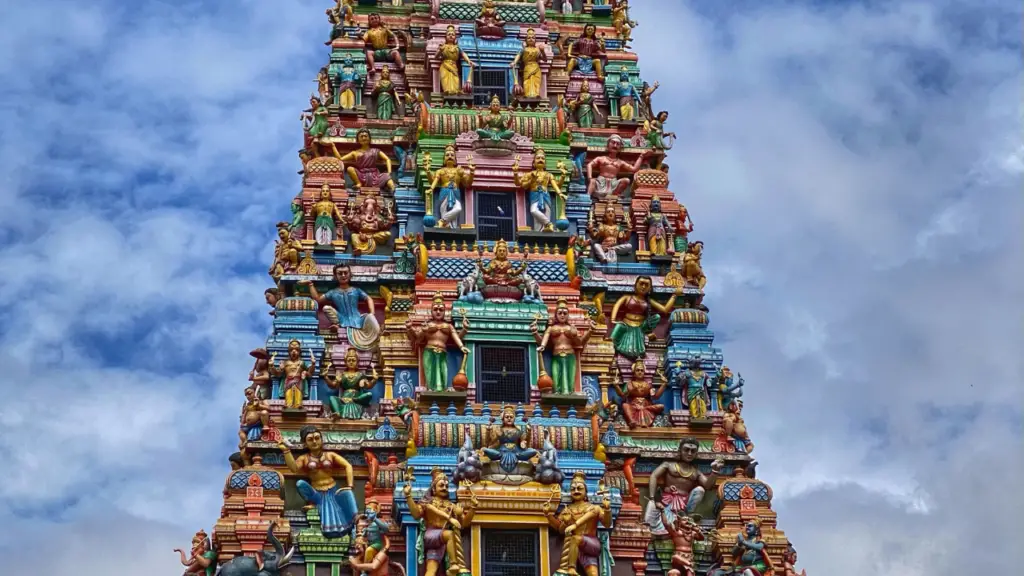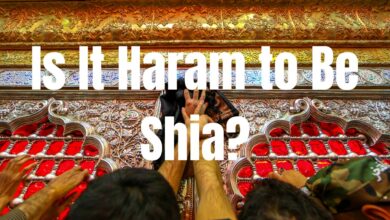Hinduism Temples | Exploring the Majesty | Sacred Sanctuaries | 2023
"Sacred Spaces of Devotion: Exploring the Mystical World of Hindu Temples"

Hinduism Temples
A Hindu temple is a sacred place of worship for followers of Hinduism. It is a place where devotees can offer prayers, perform rituals, and connect with the divine.

- Is Rakhi Sawant Muslim? | Unveiling the Truth | 2023
- Islamic Dream Interpretation
- Surah Qiyamah
- Why do Muslims follow the Lunar Calendar?
Introduction
Hinduism, one of the world’s oldest religions, is not merely a faith; it’s a way of life deeply intertwined with spirituality, culture, and tradition. At the heart of Hindu religious practice are temples, which play a pivotal role in the lives of millions of Hindus across the globe. These sacred structures are not just places of worship but also repositories of art, history, and philosophy. In this article, of Hinduism Temples we will explore the multifaceted world of Hinduism temples, delving into their significance, architectural marvels, rituals, and their role in preserving cultural heritage.
Significance of Hinduism Temples
- Spiritual Sanctuaries: Hindu temples are revered as abodes of the divine. They are sanctuaries where devotees connect with the gods and goddesses, seeking blessings, guidance, and solace. Every temple is dedicated to a specific deity, and it is believed that the divine presence resides within the temple’s inner sanctum or garbhagriha.
- Architectural Marvels: Hindu temples are renowned for their breathtaking architecture. They are a testament to the creativity, craftsmanship, and engineering skills of ancient and medieval India. From the intricate carvings of Khajuraho to the towering gopurams of South India, these temples showcase a rich tapestry of architectural styles.
- Cultural and Historical Significance: Temples are not just religious institutions; they are also repositories of history and culture. Many ancient temples have inscriptions that provide valuable insights into the socio-political and cultural milieu of the time when they were built. They often serve as markers of regional identity and pride.
Architectural Marvels of Hindu Temples
- Dravidian Architecture: South India is home to some of the most iconic Hindu temples with distinct Dravidian architecture. These temples are characterized by their towering gopurams (gateway towers), intricately carved pillars, and expansive courtyards. The Brihadeeswarar Temple in Thanjavur and the Meenakshi Amman Temple in Madurai are prime examples.
- Nagara Architecture: In contrast, North India showcases Nagara architecture, characterized by curvilinear spires or shikharas. The Kandariya Mahadeva Temple in Khajuraho exemplifies this style, known for its erotic sculptures and intricate designs.
- Hoysala Architecture: The Hoysala dynasty in Karnataka left behind a legacy of exquisite temples adorned with intricate sculptures. The Chennakesava Temple in Belur and the Hoysaleswara Temple in Halebidu are fine specimens of Hoysala architecture.
- Cave Temples: India is also famous for its cave temples, cut into mountainsides. The Ajanta and Ellora Caves in Maharashtra are UNESCO World Heritage Sites, housing exquisite Buddhist, Hindu, and Jain cave temples dating back to ancient times.

What is ‘Hinduism Temples‘?
A Hindu temple is a sacred place of worship for followers of Hinduism. It is a place where devotees can offer prayers, perform rituals, and connect with the divine.
What is the significance of a Hindu temple?
Hindu temples serve as a physical and spiritual link between the individual and the divine. They are considered the dwelling place of deities and a source of spiritual energy.
How are Hindu temples constructed?
Hindu temples are constructed following specific architectural guidelines known as Vastu Shastra and Agama Shastra. They often feature intricate designs, sculptures, and symbolic elements.
What deities are worshipped in Hindu temples?
Hindu temples may be dedicated to various deities like Lord Shiva, Lord Vishnu, Goddess Durga, Lord Krishna, and many others. The choice of deity depends on the temple’s tradition and location.
How do Hindus worship in temples?
Devotees typically offer prayers, perform rituals, light lamps, make offerings like fruits and flowers, and circumambulate the main sanctum (pradakshina) as acts of devotion.
Rituals and Worship at Hindu Temples
- Puja and Offerings: Hindu temple rituals are deeply symbolic and involve the offering of various items like flowers, incense, lamps, and food to the deities. Devotees perform puja (worship) with devotion and offer prasad (blessed food) to the gods, which is distributed among the attendees.
- Aarti: Aarti is a ritual in which a lamp or camphor flame is waved in front of the deity. It is accompanied by singing hymns and bhajans (devotional songs) that create a spiritually charged atmosphere.
- Darshan: Darshan refers to the act of seeing the deity in the temple’s inner sanctum. Devotees stand in queues, waiting for their turn to have a glimpse of the divine. It is believed that this exchange of gazes with the deity bestows blessings upon the devotee.
- Festivals and Celebrations: Hindu temples come alive during festivals. Temples are adorned with decorations, and grand processions, music, and dance performances take place. Major festivals like Diwali, Navratri, and Maha Shivaratri witness a surge of devotees.
Preservation of Cultural Heritage
Hindu temples have played a vital role in preserving India’s cultural heritage. They are not only places of worship but also repositories of art, literature, and tradition. Here’s how they contribute to this preservation:
- Architectural Heritage: Temples showcase the evolution of architectural styles over the centuries. They provide valuable insights into the engineering and artistic achievements of ancient civilizations.
- Epigraphical Records: Many temples contain inscriptions that provide historical information, including details about rulers, land grants, and social customs of the time. These inscriptions serve as important historical records.

- Artistic Traditions: Hindu temples have been centers of art, nurturing traditional craftsmanship. Sculptures, paintings, and carvings within temples depict scenes from mythology and daily life, preserving traditional artistic techniques.
- Cultural Continuity: Temples serve as centers for cultural activities such as classical music, dance, and literature. They provide a platform for the transmission of cultural knowledge from one generation to the next.
Conclusion
Hinduism temples are not just places of worship; they are living embodiments of India’s rich cultural, architectural, and spiritual heritage. They provide a glimpse into the profound connection between religion, art, and history. As timeless sanctuaries of devotion and artistic excellence, Hindu temples continue to inspire and uplift the human spirit while preserving the legacy of a civilization that has thrived for millennia.
What is the role of a priest in a Hindu temple?
A priest, often known as a pujari or priest, conducts daily rituals, ceremonies, and acts as an intermediary between the devotees and the deity.
Are there any rules or dress codes for visiting Hindu temples?
Many temples have dress codes and rules for visitors, which may include covering one’s head, removing shoes, and dressing modestly. These rules can vary from temple to temple.
What are some famous Hindu temples in India?
India is home to numerous famous temples, including the Tirupati Balaji Temple, Varanasi’s Kashi Vishwanath Temple, and the Badrinath Temple in the Himalayas.
Do non-Hindus or foreigners have access to Hindu temples?
Many Hindu temples welcome non-Hindu visitors, but it’s essential to respect the temple’s rules and traditions. Some temples may have restrictions on entry for non-Hindus.
What are the festivals celebrated in Hindu temples?
Hindu temples celebrate various festivals throughout the year, such as Diwali, Navaratri, Shivaratri, and Janmashtami. These festivals involve special ceremonies, decorations, and processions.





